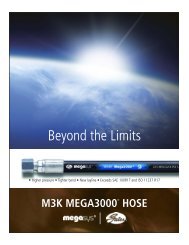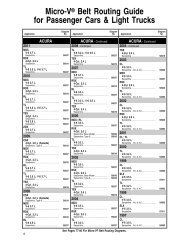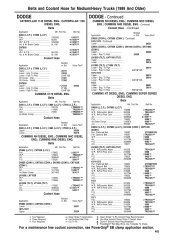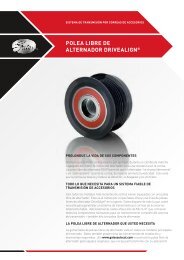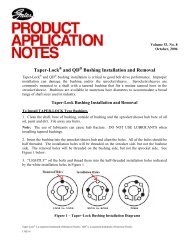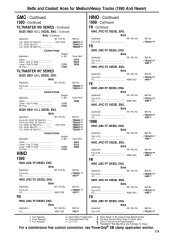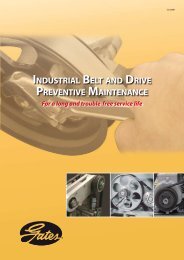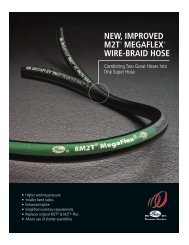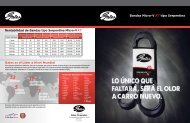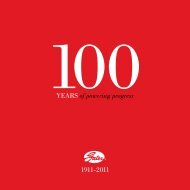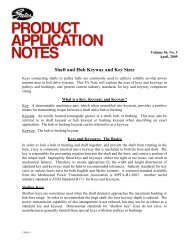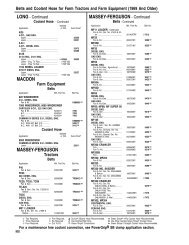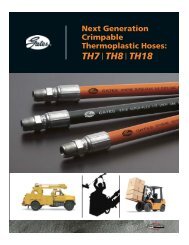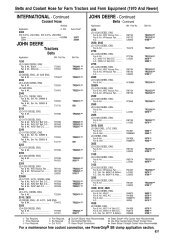PowerGrip® GT® Belt Drives
PowerGrip® GT® Belt Drives
PowerGrip® GT® Belt Drives
You also want an ePaper? Increase the reach of your titles
YUMPU automatically turns print PDFs into web optimized ePapers that Google loves.
Polyflex ® JB ® and Micro-V ® <strong>Belt</strong>s – Engineering<br />
I. Operating Characteristics<br />
A. High Speed <strong>Drives</strong><br />
One major advantage of Gates Polyflex JB and<br />
Micro-V belts is the ability to operate smoothly and<br />
efficiently at high belt and shaft speeds. For<br />
example, shaft speeds of 30,000 rpm and higher<br />
have been achieved with smaller Polyflex JB cross<br />
sections. Polyflex JB and Micro-V belts both have<br />
the ability to transmit power to shafts turning at high<br />
speed mainly because the self-imposed centrifugal<br />
force acting on it is low.<br />
Centrifugal tension occurs in a belt because of<br />
centrifugal force – the belt is rotating around the<br />
drive. Two things govern the magnitude of<br />
centrifugal tension acting in a belt drive:<br />
(1.) The size of the belt (cross-sectional mass).<br />
(2.) The speed the belt is traveling.<br />
The relationship of these items is expressed in the<br />
following formula:<br />
Tc = MV 2<br />
Where: Tc = Centrifugal tension, (lb)<br />
M = A constant depending on mass of belt<br />
V = <strong>Belt</strong> speed, (ft/min)<br />
The formula shows, as the size (mass) of the belt<br />
increases, centrifugal tension increases. But, more<br />
influential is speed, which increases exponentially.<br />
Because a V-belt is basically a tension carrying<br />
member, its horsepower rating increases with speed<br />
until a maximum value is reached, as illustrated in<br />
Fig. 21. As belt speed increases, the increase in<br />
centrifugal tension creates a need to increase the<br />
installation tension so the desired running tension<br />
is obtained. Beyond this point, centrifugal tension<br />
increases to such a level it starts to reduce the<br />
available working tension, causing the horsepower<br />
rating to drop off. (See Fig. 21).<br />
Figure 21<br />
Polyflex JB belts have proportionally higher<br />
horsepower ratings than any other conventional type<br />
V-belt. This is due mainly to the belt cross-sectional<br />
shape and special polyurethane material, as<br />
previously described. For high speed drives, this<br />
higher horsepower rating is further extended<br />
because the rotating mass of Polyflex JB belts is<br />
reduced ? smaller cross section, lighter material.<br />
Because of these unique characteristics, Polyflex JB<br />
belts may be applied on high speed drives where<br />
other belt types can not be used.<br />
B.Smooth Running<br />
Gates Polyflex JB and Micro-V belts are the<br />
smoothest running V-belt drives available. For most<br />
applications, conventional V-belts transmit power<br />
from the driveR to driveN shafts very smoothly, with<br />
a minimum of vibration. Some high speed, high<br />
precision equipment may demand better<br />
performance than a conventional V-belt which is<br />
designed mainly for heavy duty, industrial power<br />
transmission.<br />
Smooth running characteristics of a belt drive are<br />
determined by measuring the variation in center<br />
distance as the belt slowly rotates around sheaves<br />
on a special measuring machine. The machine uses<br />
one shaft on a movable base and holds the belt at<br />
constant measuring tension. There are no industry<br />
standards prescribing levels of smooth running<br />
performance. When smooth running is specified as<br />
a special requirement, most manufacturers will only<br />
supply these belts on a made-to-order basis.<br />
Conventional V-belts are usually manufactured by<br />
plying up layers of various rubber stocks, fabric and<br />
tensile cord. In most applications, the layers and<br />
overlaps do not disturb the drive operation. But, as<br />
speeds increase and sheave diameters decrease, or<br />
the machinery supporting the drive becomes more<br />
sensitive or compliant, the small discontinuities in<br />
the layers, coupled with overlaps in fabric, become<br />
much more apparent with respect to smooth<br />
running.<br />
Due to the special patented manufacturing process,<br />
Polyflex JB belts have exceptionally smooth<br />
operating characteristics. <strong>Belt</strong>s are cast in<br />
polyurethane and precision ground to assure the<br />
best possible cross sectional uniformity. The result<br />
is low center distance variation and minimal<br />
vibration.<br />
Gates Micro-V belts also have excellent smooth<br />
running characteristics. Micro-V and Polyflex JB<br />
drives have been used extensively on applications<br />
such as precision grinders, medical equipment,<br />
office equipment, business machines, etc. where<br />
smooth running is an essential performance<br />
requirement.<br />
C. Noise<br />
Polyflex JB and Micro-V drives generate minimal<br />
noise levels when installed and operating properly.<br />
They can, however, generate noise in adverse<br />
conditions such as misalignment, improper tension,<br />
under design, etc.<br />
Since Polyflex JB belts have a polyurethane body<br />
with a high coefficient of friction, they may react on<br />
a steel surface causing noise, particularly on a<br />
misaligned drive. When a drive is misaligned the V-<br />
belt will not enter the sheave groove properly. It will<br />
stick and rub heavily on the side on the sheave<br />
causing noise. (See Fig. 22). Low belt tension can<br />
also be a source of noise problems. (See Section III.<br />
Drive Alignment and Section IV. <strong>Belt</strong> Tensioning,<br />
page 78.)<br />
Figure 22<br />
Ribs molded laterally across the top of Polyflex JB<br />
belts help to reduce bending stresses and increase<br />
torsional stiffness. Because of the ribbed overcord, a<br />
backside idler may generate objectionable noise.<br />
The sound level produced is usually inversely<br />
proportional to the pulley diameter. So, the larger<br />
the pulley diameter, the lower the noise level.<br />
Backside idlers should be as large as possible. See<br />
Table 42, Page 81, Minimum Sheave Diameter for<br />
more information on backside idler<br />
recommendations.<br />
76 The World’s Most Trusted Name in <strong>Belt</strong>s, Hose & Hydraulics.



